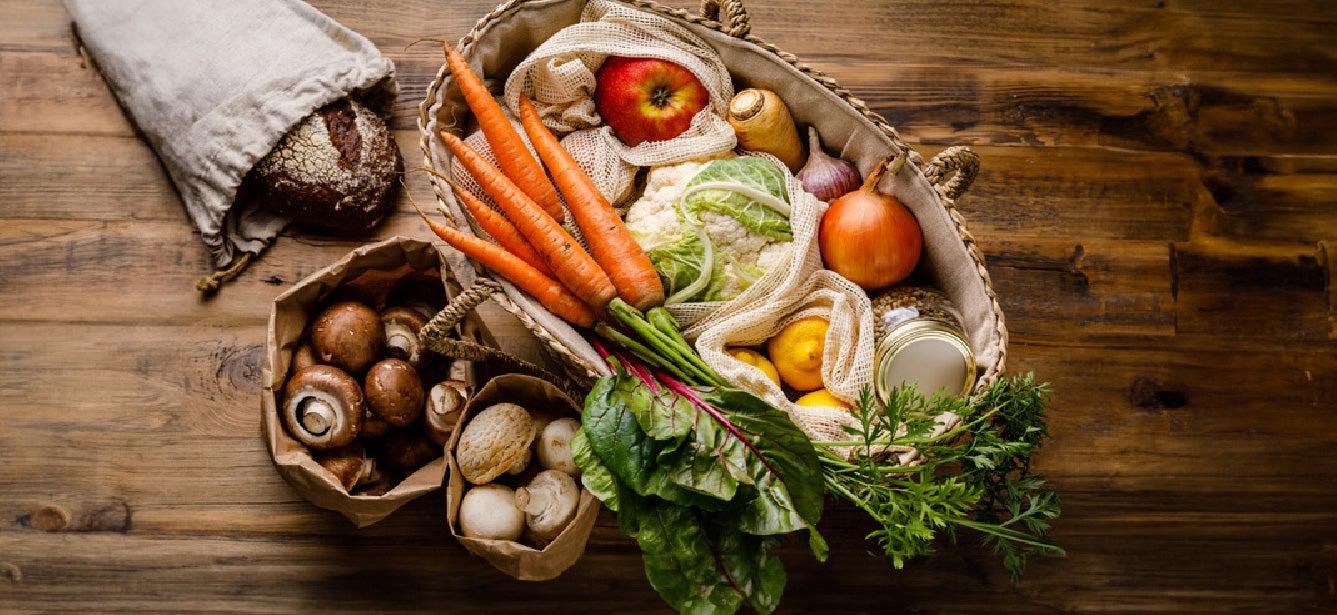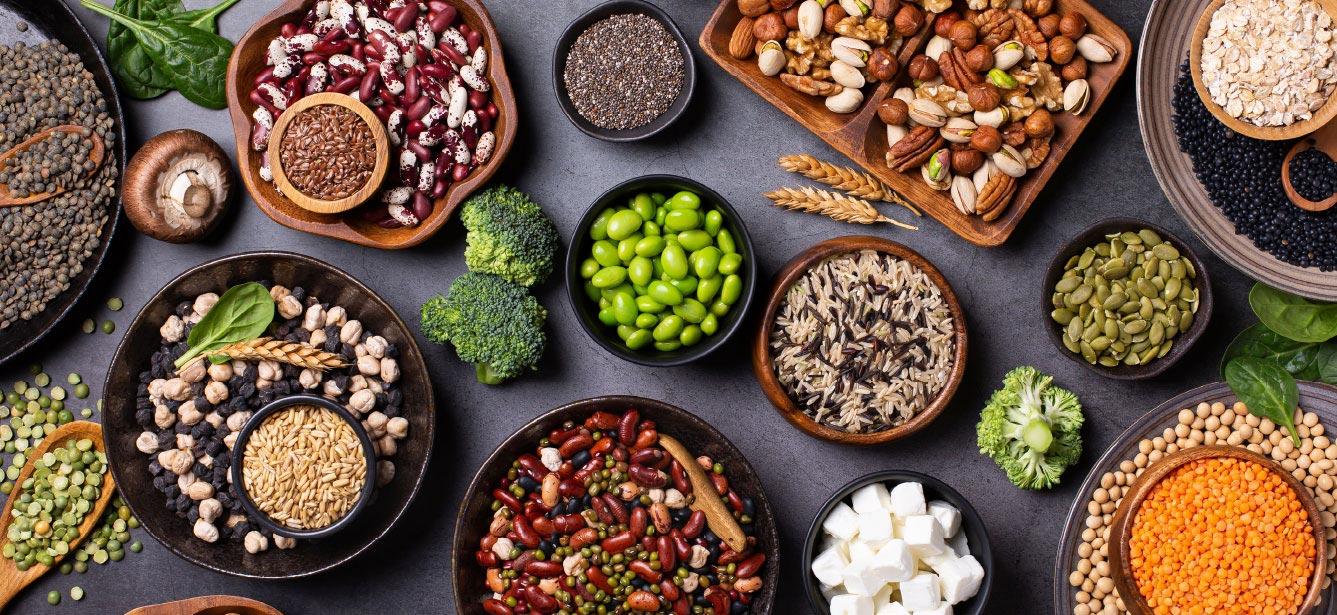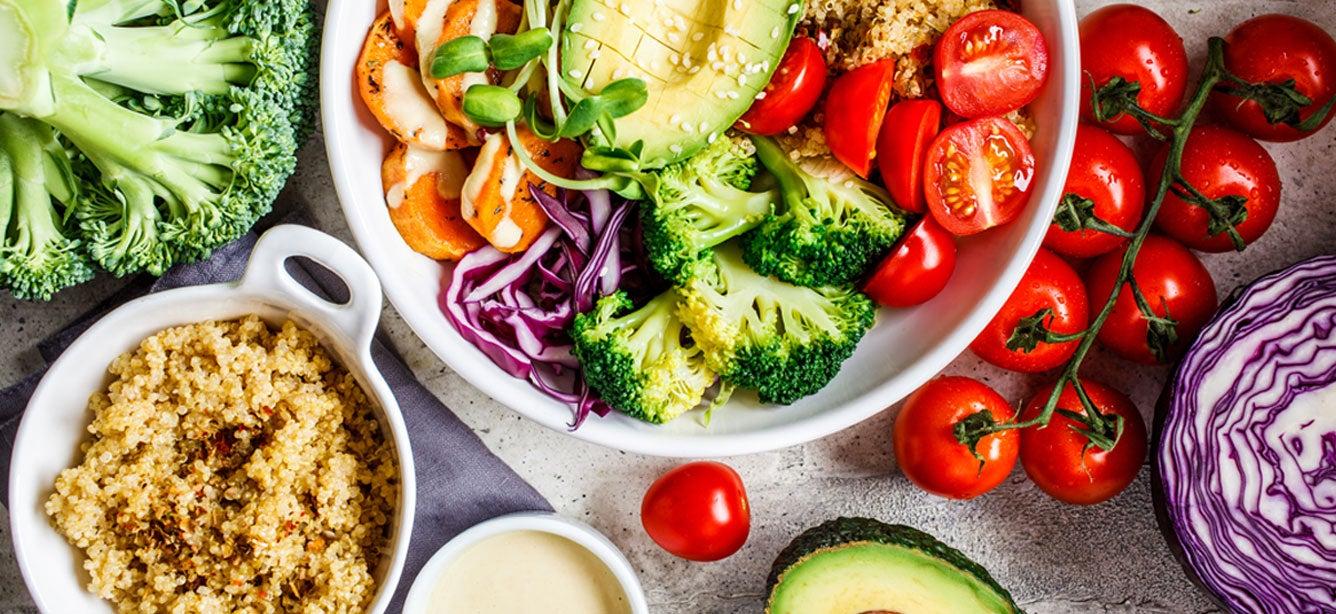
Related Topics
Can you improve your diet and save the Earth through your daily food and beverage choices? Sounds very aspirational, but the answer is a resounding, “Yes.” This is the goal that “Beyond the Table”—the 2024 National Nutrition Month theme set by the Academy of Nutrition and Dietetics—invites everyone to strive for.
The way we eat and produce food can have profound impacts not only on our own well-being, but on that of the environment as well.
3 simple tips to achieve a healthier you and healthier planet
1. Go flexitarian
“Plant-based” can describe a style of eating that includes more foods that come from fruits, vegetables, grains, nuts, and seeds. It can also be a term used to market foods like dairy alternatives and meat substitutes.1 There are many reasons why people may choose to consume more plant-based foods: some do so because of the health benefits associated with eating more fruits and vegetables while others are motivated out of concern about the environment.
Additional planning may be needed to ensure you get all the vitamins, minerals, and protein you need from plant-based foods. For example, non-heme iron (the form of iron found in plant foods like whole grains, nuts, seeds, legumes, and leafy greens) is better absorbed by the body when taken at the same meal with vitamin C and heme iron (the form of iron found in meats, poultry, and seafood). Vitamin B12—found naturally in animal protein—may be a challenge to get on a strictly vegan diet unless fortified foods or supplements are also included. Some plant-based beverages provide only a small amount of protein—with added sugars too if they are flavored. And only fortified versions of soy milk and soy yogurt are considered part of the Dairy Group—according to MyPlate—because their nutrient content closely resembles cow milk.
Animal-based foods, on the other hand, are important sources of key nutrients such as protein, heme iron, and vitamin B12. However, eating them beyond moderation—especially red meat—can harm your health and the planet. Raising livestock for food leaves a higher environmental footprint than plant-based food because of greenhouse gas emissions, land use, and biodiversity loss.2 Red meat, for instance, accounts for 150% more greenhouse gas emissions than chicken or fish.3
Is there a middle ground between eating plant- and animal-based foods? Yes! It’s called a flexitarian diet: a style of eating that encourages mostly plant-based foods while allowing meat and other animal products in moderation. The EAT Lancet Commission recommends eating at least 125 grams of plant-based protein from dry beans, lentils, peas, and other nuts or legumes per day and no more than 98 grams of red meat pork, beef or lamb, 203 grams of poultry, and 196 grams of fish per week.
According to Harvard epidemiology and nutrition professor Walter Willett, MD, DrPH, who co-chaired the EAT Lancet Commission, this translates to about one dairy serving and one serving of other animal-based protein per day. Proteins are supplemented with plenty of fresh fruits, vegetables, and whole grains. “And we did find that if everybody in the world adopted that diet, we could prevent about 20% of premature deaths around the world,” he said.
2. Eat locally
Eating locally grown food makes a lot of sense from a nutritional, environmental, and economic standpoint.4
Produce that’s bought in season is packed with nutrients and flavor because they are picked at the peak of ripeness and retain more of their nutritional value compared to those that were harvested early to be shipped and stored at distribution centers before delivery to retailers. Your grocery store will likely sell older produce imported from far away states and countries. Foods sourced from distant locations are prone to contamination introduced at different points of the food supply chain beginning from harvesting to shipping and distribution.
Buying locally grown food helps maintain farmland and green/open space in your community. It can reduce the average consumer’s greenhouse gas emissions by 4% to 5%.3 Furthermore, money spent with local farmers keeps the wealth closer to home and is reinvested with goods and services in your community. Your local farmers can tell you more about how they raise and harvest their crops. You’ll become more knowledgeable about your food when you know where it comes from and who grew it.
You can also try your hand at growing your own garden! But if you’re not quite ready to cultivate your green thumb, you can always check out your local farmers market or participate in a farm share program.
3. Reduce food waste
Healthy and sustainable eating can be achieved when you plan your menu for the coming week and shop according to plan. This also saves time (i.e., less trips to the store for forgotten/missing ingredients) and money. Be familiar with the shelf life of food and practice good food safety. Stick with portion sizes that align with your calorie needs. Pack leftovers into lunch boxes; use them in new creative recipes; or keep them for future consumption. It’s good for the planet and your budget because when less food is wasted, less food needs to be produced to feed the world.
For more information on healthy eating, read NCOA’s Healthy Eating Tips for Seniors and check out The Academy of Nutrition and Dietetics’ resources For Seniors (eatright.org).
National Nutrition Month 2024 resources for professionals include tip sheets on eating right on a budget, reducing food waste, and healthy eating tips for older adults.
Sources
1. Academy of Nutrition and Dietetics. Smart Tips for Plant-Based Eating. Found on the internet at https://www.eatright.org/national-nutrition-month/resources
2. EAT-Lancet Commission. The Planetary Health Diet. Found on the internet at https://eatforum.org/eat-lancet-commission/the-planetary-health-diet-and-you/
3. Columbia Climate School. How Green is Local Food? Found on the internet at https://news.climate.columbia.edu/2012/09/04/how-green-is-local-food
4. Michigan State University. 7 Benefits of Eating Local Foods. Found on the internet at https://www.canr.msu.edu/news/7_benefits_of_eating_local_foods




